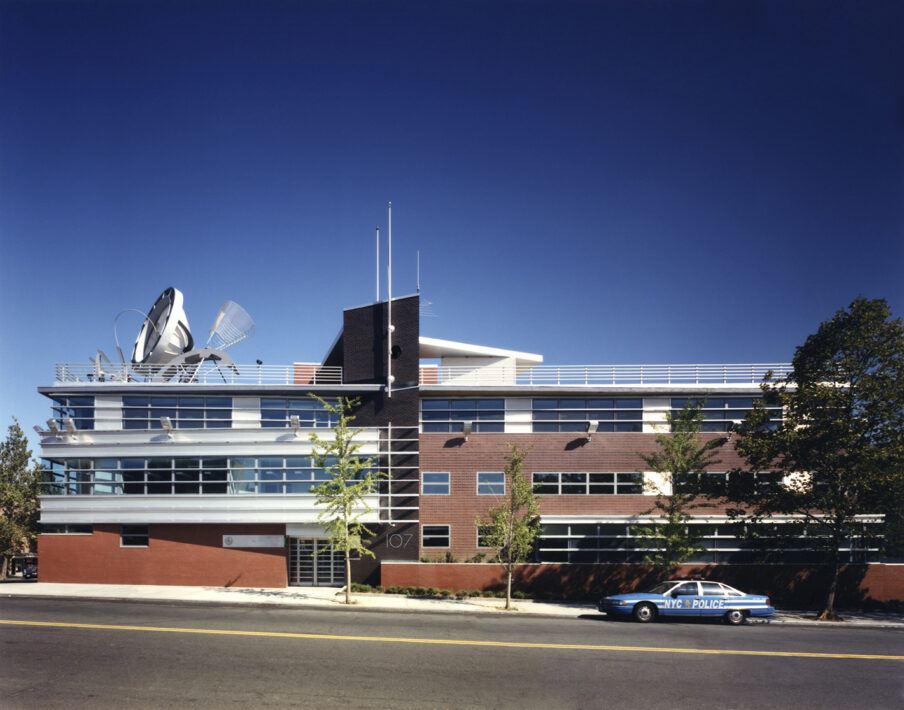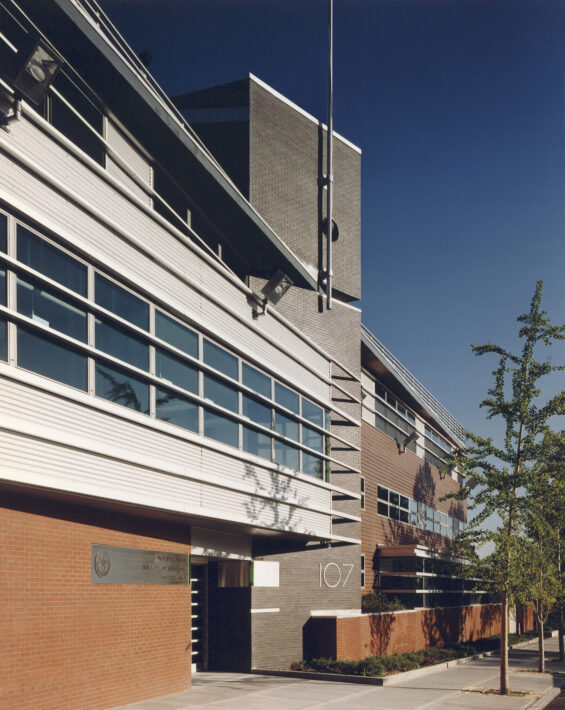The 107th Police Precinct contains the typical functions of a New York City police station as well as the offices of the Borough Patrol Command for Queens. The project includes on-site parking as well as dedicated community spaces.Police stations used to be civic monuments; in designing the 107th Police Precinct, Perkins Eastman’s design goal was to take the prototypical programmatic requirements and house them in a civic building that would have a positive influence on the surrounding community. Although intentionally abstract, the composition of the building was developed by meshing the functional realities with a stylistic interpretation of the utilitarian modernist buildings surrounding the site, including pre-war public housing and a post-war shopping center.The building was placed on the building line limit of the corner site to maximize parking. The ninety-five-degree intersection of two major streets was used as a basis for enlivening the massing and elevations. Sculptor Alice Aycock worked collaboratively with the architectural team to create a prominent work of public art on the roof of the building, as part of the city’s One-Percent-for-Art Program. The sculpture is a symbol of communication, an important community-driven ideal of the NYPD.On the exterior, a simple running bond of red and iron spot brickwork, derived from the surrounding urban context, defines the building’s volumes and helps integrate the structure into the residential community. By using a limited palette of simple materials, the building conveys strength without overwhelming the scale of the community. Inside, the building is constructed of materials that can withstand heavy 24-hour traffic and allow relatively low maintenance. Terrazzo floors, structural glazed walls, steel, and aluminum were used for durability, and to unify the interior and exterior design language.


